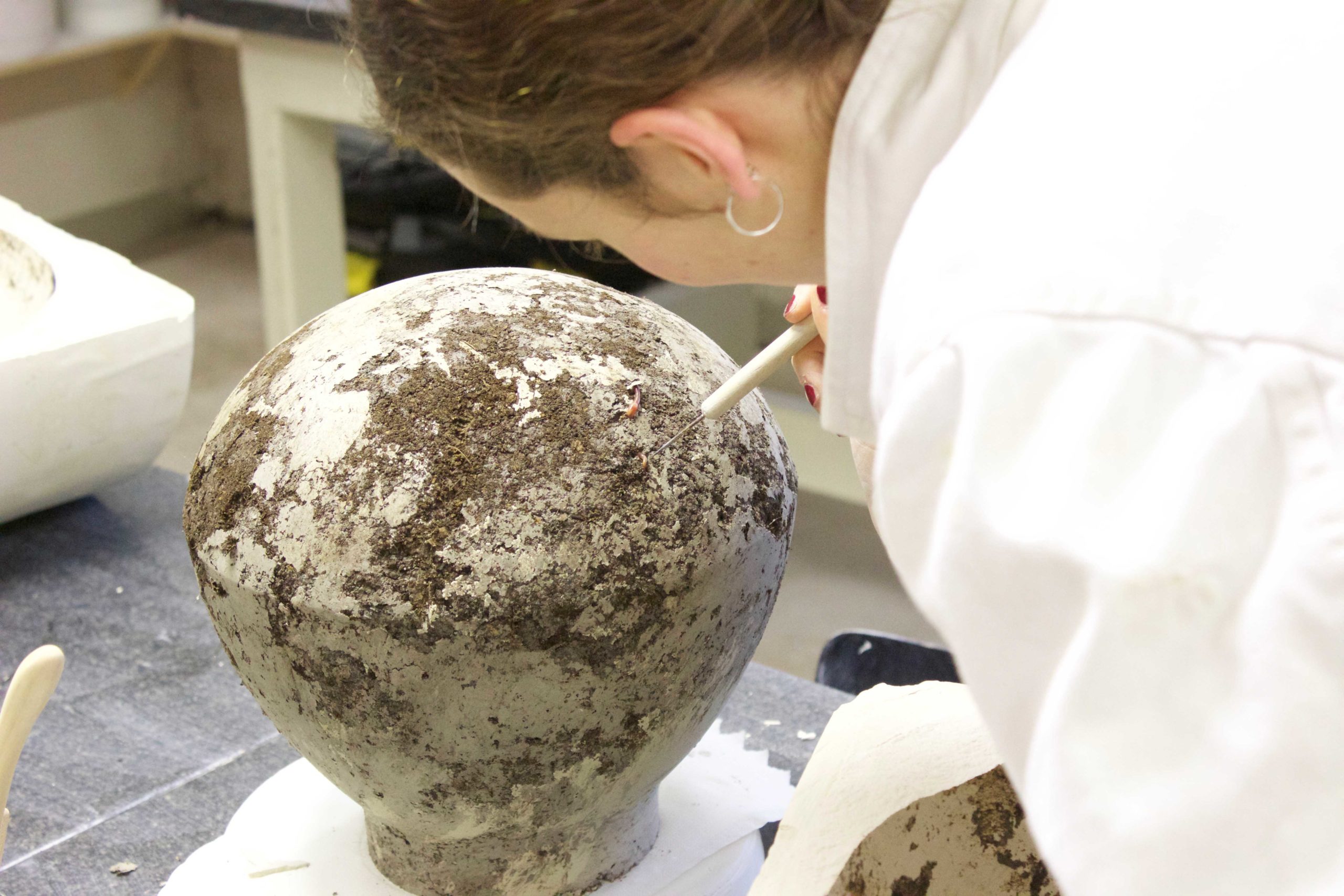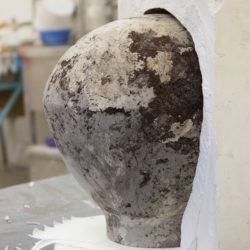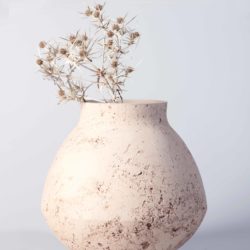Peatland Forensics
Description
"Peatland Forensics" deals with "Ecological Grief" from a design perspective. The term describes negative emotions that are caused by experiencing indirect or direct consequences of the climate crisis. What does it mean to mourn a landscape? From my engagement with the Red Moor, a landscape in the Rhön which is directly affected by climate change, eight clay pots were created. The series is showing the anthropogenic and climatic processes that have shaped the bog throughout the centuries while forming a reminiscence for the place. They tell its' story through shape, manufacture and material and show its constant threat of dehydration. Thus, by tactile experiencing ecological processes, another dimension of the climate crisis can be conveyed.What is the Topic?
The manufacture of products has always been interwoven with landscape and nature in complex ways. The aim of this project was to create a series of objects to reflect on the man-made destruction of a millennia-old landscape: the peat-bog. The objects function as a memorial and reminiscence for the effects of climate change on the moorland and are intended to anchor the topic of “ecological grief” in the public discourse. The objects created mediate between viewer and landscape and set an impulse to acknowledge and reflect on their own fears and feelings about the effects of climate change. The focus therefore lies less in a direct reduction of environmental pollution, for example through sustainable materials etc., but rather on developing strategies of how to stay mentally and creatively resilient in the face of often distressing news about the health status of our planet. Long term, this could result in an increase of environmental awareness and informed action - both in the design practice and our everyday context.
Why does it look like this?
Our perception of "nature" has historically changed many times. This series of vessels show the anthropogenic and climatic processes that have shaped the Moor through the centuries while forming a reminiscence for the place. Around 1800, fuel became scarce in the Rhön area. The peoples struggle with the Moor began. After only 99 years of peat extraction, the Red Moor is today considered “dead”. In the 1960s, a medieval clay pot was found in the bog during peat extraction. As an early „mass product“ it carries information about everyday life in the forgotten „Moordorf“, a little village that once existed near the bog. This "Kugeltopf-Gefäß" served as a starting point for the formal design process. Potters around the Moor worked with the white clay of the bog and their kilns were fired with local peat. In my design I used all of these elements to capture the change of the landscape over the period of human intervention while also referencing the cultural products that arose alongside with it. Due to the increasing destruction of the clay pots along the vessel-series, abstract processes such as soil extraction and drought can be understood.
What is special?
The method: During a site-specific research process based on the mourning process analyzed by the psychologist Verena Kast all resources for the design are gathered.The design process thus runs parallel to the grieving process. Material, shape, production method arise from the investigative work on site in the bog. This design process, which takes place in direct dialogue with the landscape, forms a ritual that is accomplished by designing the vessels as mourning objects.
What is new?
The climate crisis is one of the most frequently discussed topics of our time. The acute threat of climate change affects us all. However, science mostly describes the climate crisis in the form of statistics, or the alarming facts are described in newspaper articles. What's often missing is the link to the psychological effects of climate change. However, Ecological Grief is a common phenomenon that often leads to helplessness and fatalism. But in order to counteract climate change, psychological resilience must be further guaranteed. Out of this need, "Peatland Forensics" draws a connection to mourning cultures and tries to make the abstract topic of landscape change through climate change tangible through physical representation.




